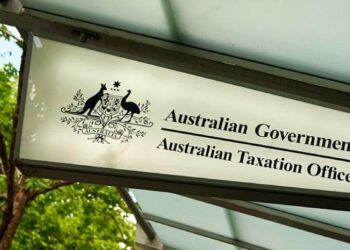In its recent technical update, Townsends Business and Corporate Lawyers said that when the reform was announced in April 2018, the government claimed that it would allow for greater flexibility but with little explanation how.
“The enthusiastic Explanatory Memorandum for the Bill couldn’t point to any significant need or request for reform. Just 7 per cent of SMSFs in Australia have more than two members,” the firm said.
“Curiosity aside, ‘jumbo’ funds are coming so we need to consider some of the important issues that a jumbo fund gives rise to.
“Jumbo funds may open the opportunity for SMSFs to be seen more as an asset holding structure rather than simply a tool for families like the Brady Bunch.”
Townsends said that the benefits of a six-member fund would include economies of scale by sharing compliance and administration costs, higher contribution in-flows from five or six members, and potentially sheltering small super guarantee contributions for the children from high public offer account fees.
“Conversely, the challenges a jumbo fund would create might include the complexity of more member trustees, children knowing more about their parent’s financial affairs and vice-versa, different investment strategies for different age groups, and possibly higher establishment costs,” Townsends said.
While the maximum number of trustees that a trust can have is regulated by state law, if the fund’s home state’s trustee legislation has a limit of less than six then a jumbo fund in that state will need a corporate trustee, according to the firm.
Control would also need to be factored in as a result when considering additional members consequences.
“Three or four children outvoting their parents at a meeting of individual trustees is not an ideal situation,” Townsends said.
“The deed should permit weighted voting by the member’s account balance rather than by simply a raised hand at the meeting. The same would need to apply to both meetings of shareholders and directors of the corporate trustee.”
In terms of creating an investment strategy that will suit at least two very diverse age groups while maintaining the benefits of the single fund with its pooled additional resources should prove challenging, the firm noted.
This would mean increased contributions from the extra members could permit the fund to buy assets otherwise not available to it, but increased buying/borrowing capacity brings its own serviceability concerns.
Changes in structures
Looking beyond the family, Townsends said the six-member fund may see more people view the SMSF as an appropriate structure for a wide range of investments, particularly those involving a group of people hoping to pool their resources.
“For example, an SMSF may be the structure business buddies use to purchase an asset rather than being restricted to being a structure only for jumbo families,” Townsends explained.
“Provided there’s no breach of the sole purpose test such an approach could result in material benefits.”
This would have impacts in several areas such as tax and borrowing and according to Townsends the SMSF has immense advantages over other commercial structures when it comes to tax, both in terms of the applicable rate of tax and the use of franking credits. The lower tax rate also potentially accentuates the compounding effect of earnings re-investment in the fund, the firm noted.
Meanwhile, the limited ability to resource the SMSF due to contribution limits can be overcome by borrowing.
“The SMSF may enhance its capital base through limited recourse borrowing subject to appropriateness, the investment strategy and the LRBA rules,” the firm said.
“This can provide the SMSF with greater flexibility to invest in more substantial projects or further diversify investments. Loan interest and borrowing expenses are generally tax-deductible to the SMSF.”
Further considerations
In terms of the participating member’s interest in the increase, members of an SMSF can contribute in equal amounts but unequal balances can easily be accommodated. This would mean for preservation and access restrictions, superannuation benefits are preserved, the firm said.
“In the SMSF, each member maintains their own member balance (account) to which investment earnings and expenses can be allocated on a fair and reasonable basis, subject to the governing rules,” Townsends explained.
“Generally, the benefits can only be withdrawn on the member meeting an unrestricted condition of release e.g. retirement.
“However, payment of benefits from superannuation is not mandatory even after a member has met an unrestricted release condition.
“In some circumstances, especially where members have substantial assets and income outside super, it may be advantageous to retain their money in an SMSF enjoying a lower tax rate for future withdrawal.”



If the sole purpose is to accumulate weath and not the provision of a pension in retirment phase, why isn’t this treated under part 4a – tax avoidance scheme?